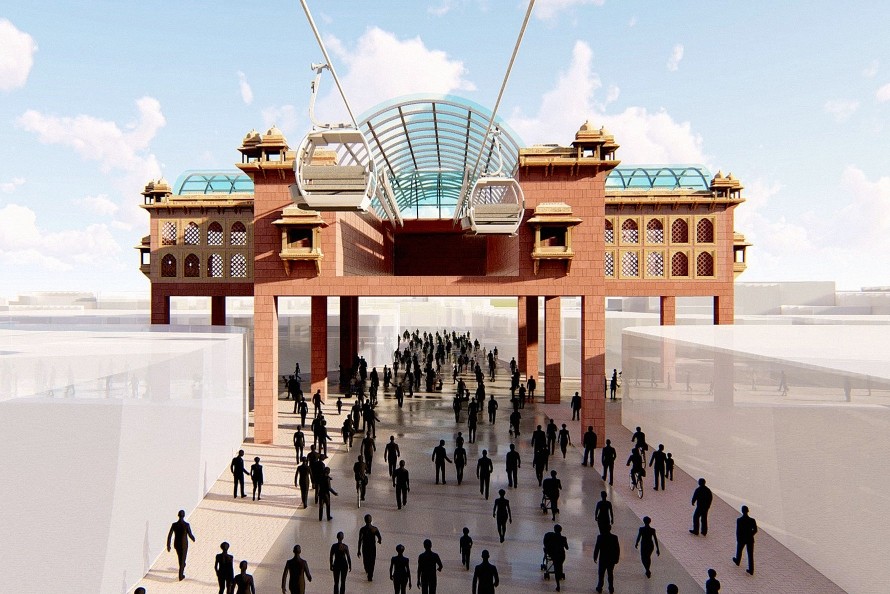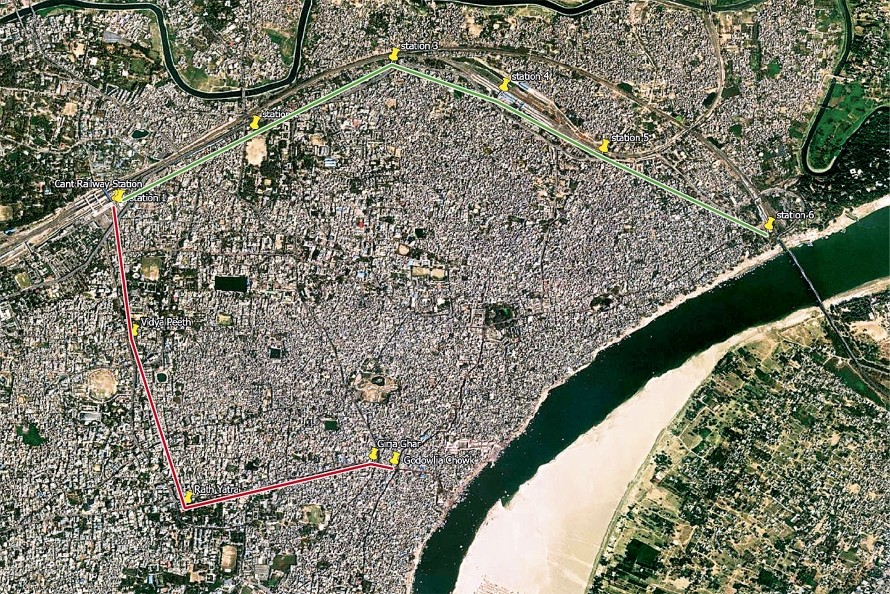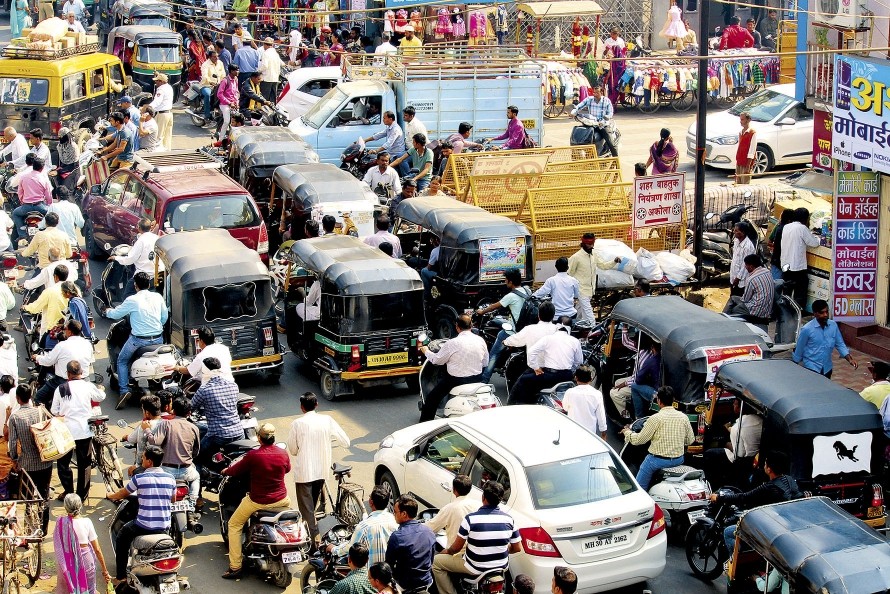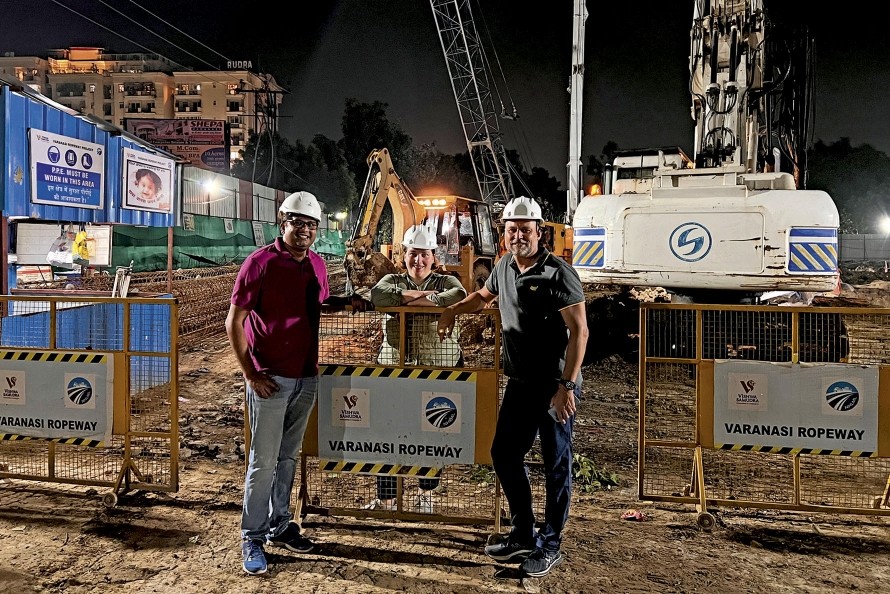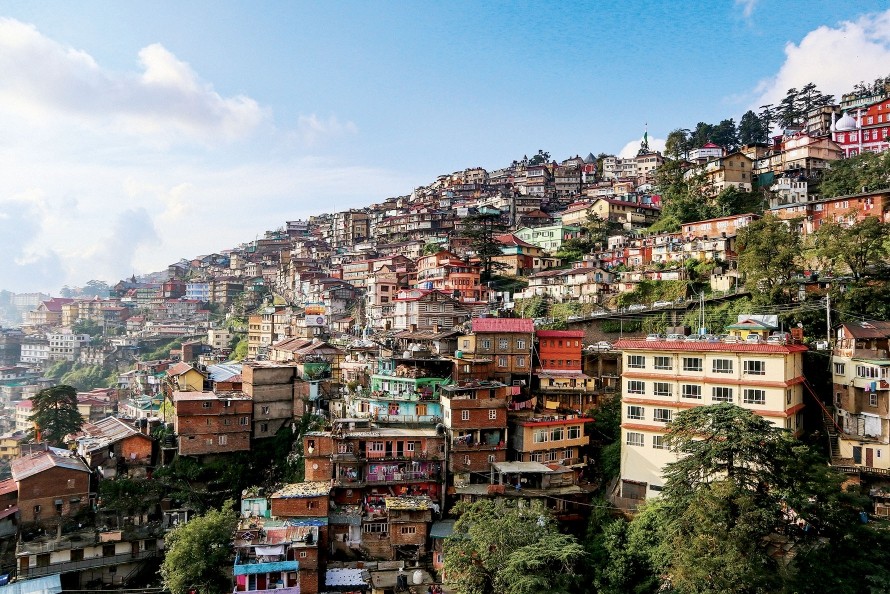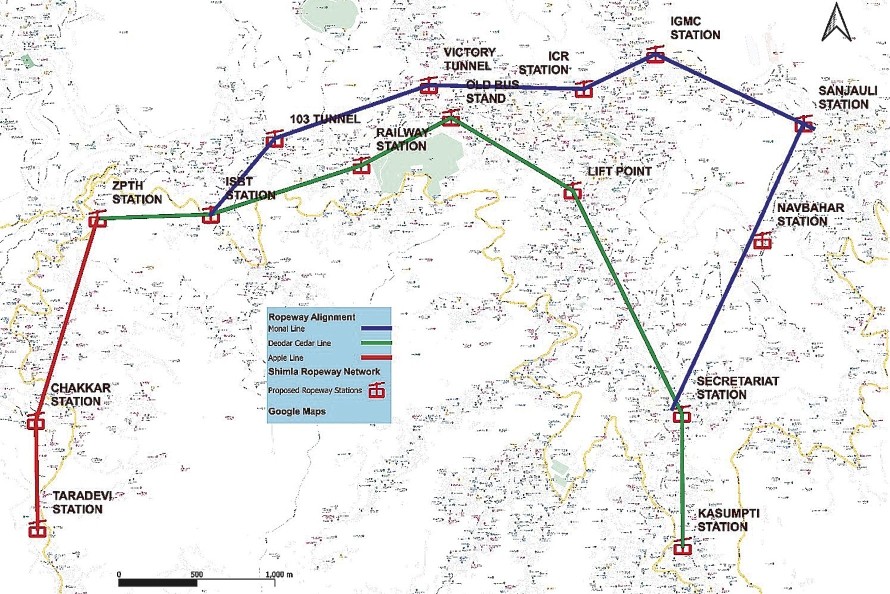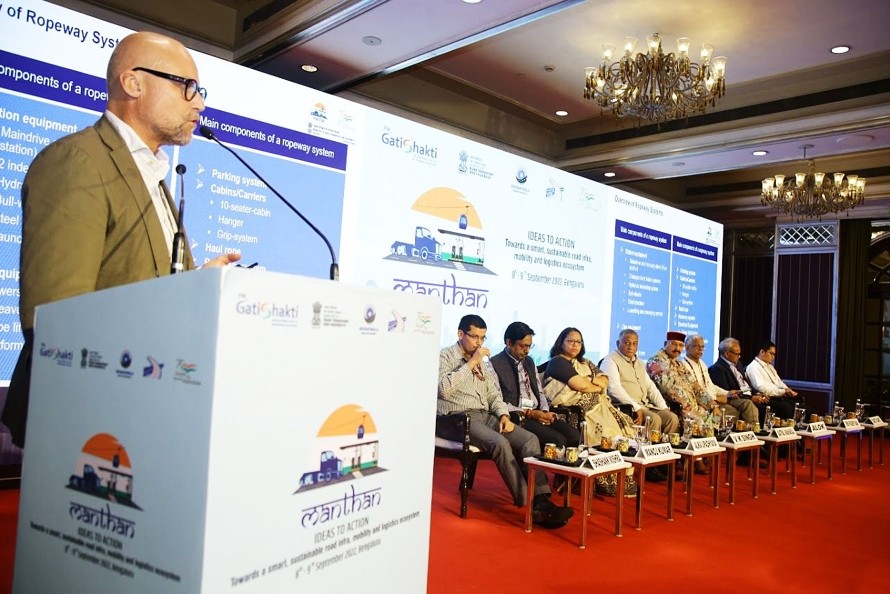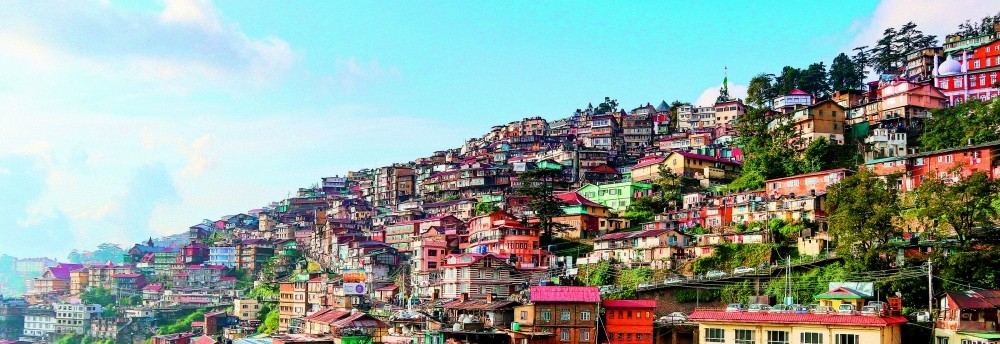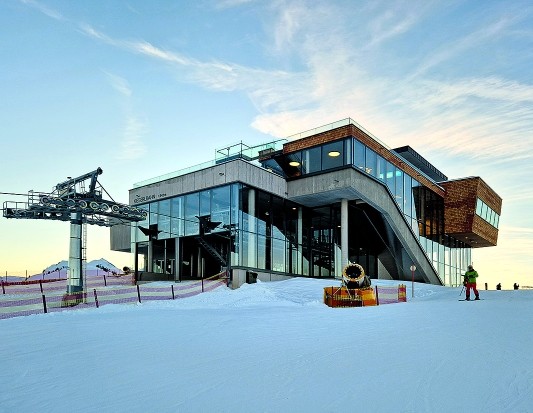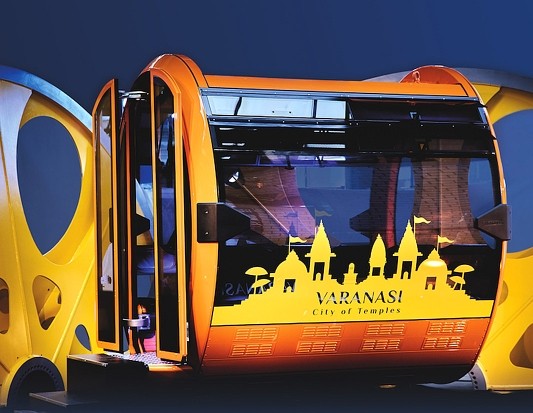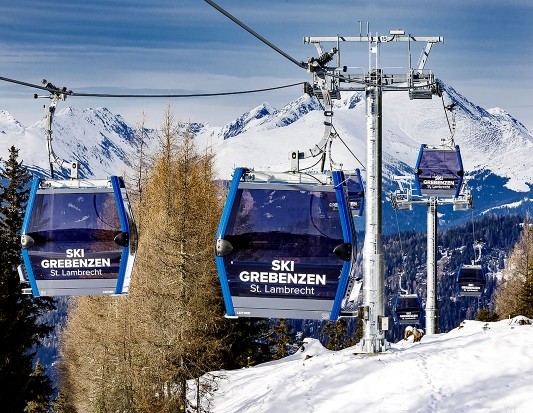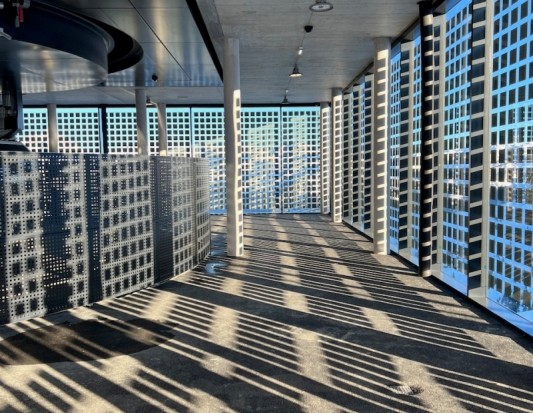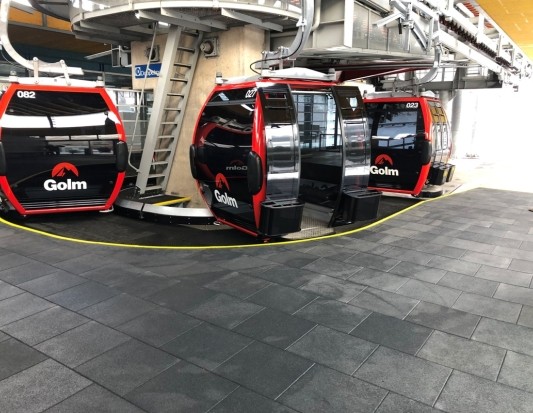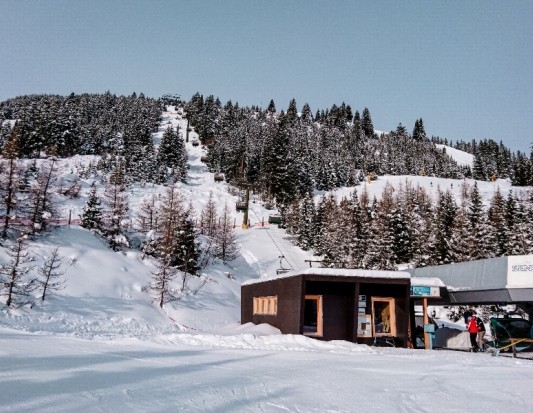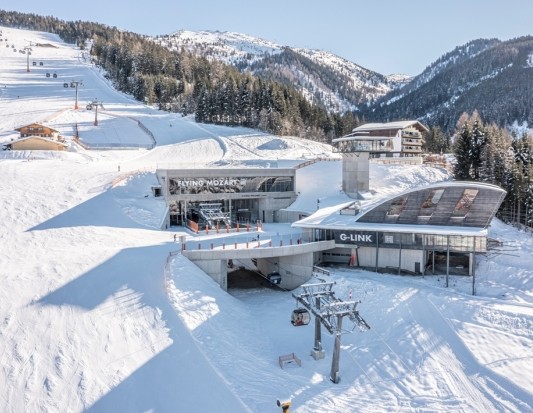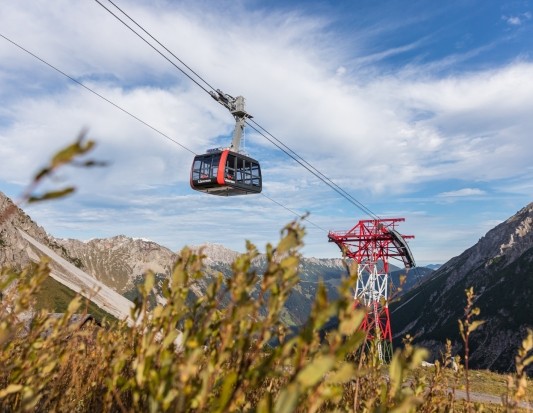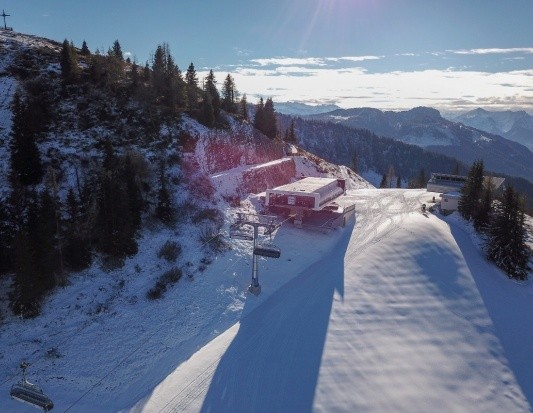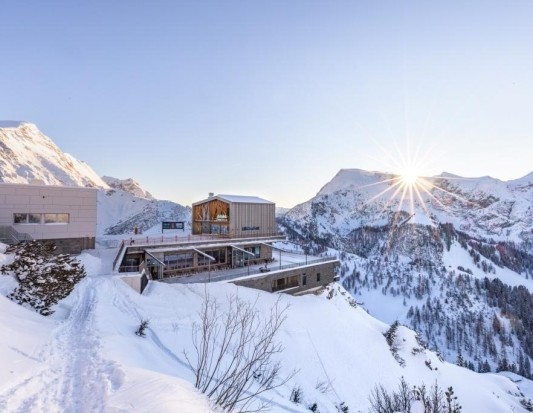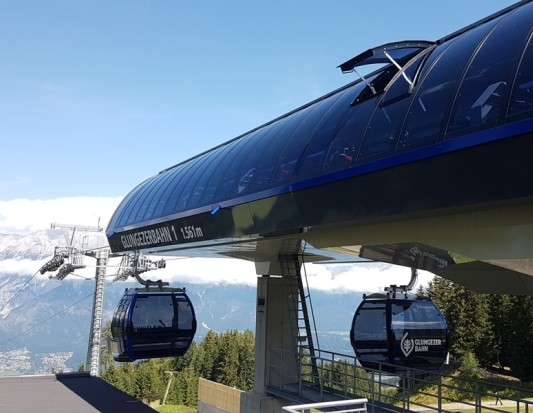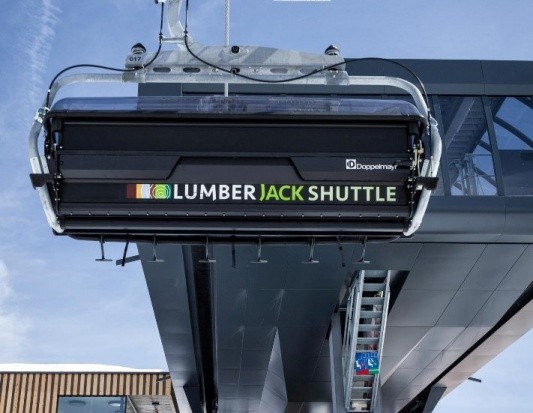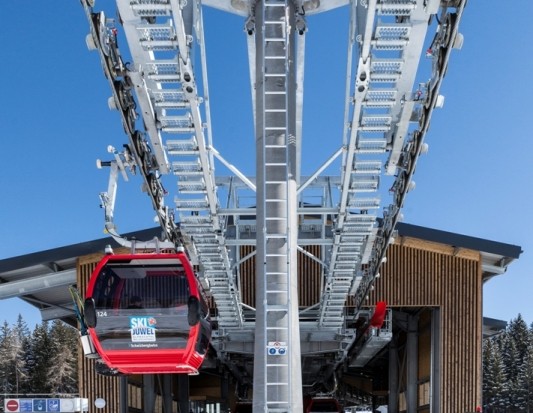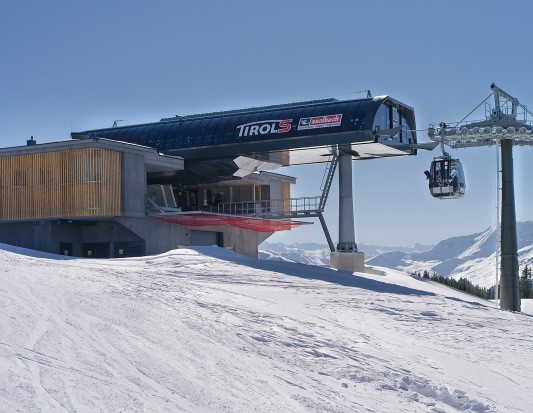Ropeways for India
Varanasi, Shimla
Ropeways for India
Sacred temples, dense jungles, four-lane roads teeming with people, vehicles, and animals, temperatures soaring up to 45 degrees in the shade, and incessant honking: Salzmann Engineers, in collaboration with the BERNARD Group from Hall in Tyrol, took the leap to India. Together, these two specialists are examining suitable locations for ropeways across the subcontinent and have been instrumental in the planning of two flagship projects.
In the "eternal city" of Varanasi, the joint venture ensured the swift realization of the country's first urban ropeway. From May 2025, it will transport 3.000 pilgrims hourly to the renowned Kashi Vishwanath Temple. Meanwhile, three lines with a 14-kilometer network are being constructed in the mountain town of Shimla. The ropeway system aims to significantly improve the lives of those living over 2.000 meters above sea level.
Embarking on the Adventure
For the team at Salzmann Engineers, it all began with a call from the BERNARD Group. The internationally operating engineering firm from Hall in Tyrol planned to participate in India's massive infrastructure project, "Parvatmala," and sought a partner with ropeway expertise. Markus Türtscher from the BERNARD Group dialed Stephan Salzmann's number in November 2021, discussing the 3.5-billion-dollar ropeway investment program by the National Highways Logistics Management Limited (NHLML).
While the BERNARD Group, with its local presence in Delhi, would manage the project coordination and all construction matters, Salzmann Engineers would oversee the ropeway technology design. Initially, the focus was on examining potential locations and conducting feasibility studies. The flagship project in the pilgrimage city of Varanasi followed, with Shimla's mountain town coming later. "Such an opportunity might only come once in a lifetime. India, with its topographical and urban structure, is tailor-made for ropeways: limited space, dense populations, jungles, and mountains," recounts Stephan Salzmann.
The entire team was immediately captivated. "Of course, we had concerns. We are experts in ropeways, a field we have excelled in for 50 years. However, we had never operated outside of Europe. India would present us with numerous cultural, linguistic, climatic, bureaucratic, and legal challenges. Participating in the bidding was a leap into the unknown," Salzmann reflects. Together with the BERNARD Group, the company established a joint venture – and secured the contract.
Project Validation from North to South
Around 300 locations were submitted by states and union territories for the "Parvatmala" program. Salzmann Engineers and the BERNARD Group were assigned 20 of these for feasibility assessments. "This underscored the immense scale of the project," Salzmann recalls. The potential locations span from the far north in the Union Territory of Ladakh to the southern state of Tamil Nadu, covering over 3.500 kilometers. The projects range from urban traffic relief to managing pilgrim flows and tourism. Some routes are short, while others span several kilometers. The "pre-feasibility" phase involves analyzing locations, traffic situations, and visitor flows.
"From the mountain temple at 3.000 meters above sea level to installations in the jungle, we've seen it all," Marie Bach remarks. Evaluating feasibility considers not only geographical factors but also ownership and religious considerations. "Temple authorities influence the route planning and often have the final say. Power lines must not be disrupted. Trees, especially in nature reserves, are sensitive. While clearing is sometimes necessary for support structures, it can be a challenge, with military involvement and flight restrictions complicating drone surveys and measurements," Salzmann sheds light on unexpected challenges.
Alongside "pre-feasibility" studies, the joint venture is tasked with twelve planning projects, producing "Detailed Project Reports" (DPR) and general contractor tenders (Build & Operate). Safety is paramount. While large projects adhere to European standards, smaller installations lack comparable national standards. "We align with European standards and address safety concerns primarily through design elements, like integrated evacuation," emphasizes Stephan Salzmann.
Pilgrim Flows Over the Rooftops of Varanasi
Varanasi in the state of Uttar Pradesh stands as one of the world's oldest inhabited cities, boasting over 3.000 years of history. The sacred city on the Ganges is believed to be the abode of Lord Shiva, drawing millions of pilgrims annually to its 2.000 temples. The epicenter of religious devotion is the Kashi Vishwanath Temple complex, with the Ghats by the Ganges. Daily, over 90.000 people make this pilgrimage – a staggering number. Until now, the journey involved navigating congested streets bustling with vehicles. "Extreme caution was required during visits. Those unfamiliar risked their lives," Salzmann recounts.
A visionary ropeway project from the "Varanasi Cantt" station to the temple complex and the "Godowalia Chowk" station aims to change this. The Kashi ropeway is India's first urban ropeway, a flagship project of the "Parvatmala" program championed by Prime Minister Narendra Modi. After preliminary planning, the project stalled, bringing Salzmann Engineers and the BERNARD Group into play. Immediately following the joint venture's initial project assignments, the Varanasi ropeway was added as a priority. "We had to act swiftly. Our work was part of the general contractor tender," Bach recalls. This encompassed the entire ropeway design, including building planning, structural design, and foundation concepts.
While station locations were set, determining the optimal route over the city's rooftops posed challenges due to diverse property ownership. A unique aspect of Indian law simplified matters. "Ropeways are treated like high-voltage lines. If they pass over property, compensation is provided. Thus, only building rights for the support locations are needed," Salzmann explains. The team scoured state-owned properties like roads and traffic islands, aiming to create a straight line at regular intervals.
After five weeks, the basic structure was in place. State support was evident: "There was always a strong political interest, crucial for swift implementation," Salzmann notes. Spanning four sections and five stations, the 3.7-kilometer route seamlessly integrates into the historic fabric, supported by 29 towers up to 46 meters tall. With Prime Minister Modi's groundbreaking in March 2023, construction began. By May 2025, modern 10-person cabins will transport pilgrims – 3.000 per hour for 16 hours daily. Varanasi envisions a comprehensive network, with plans underway for the next phase from the Cantt station to the Namo Ghat.
Time Constraints in Mountainous Shimla
Dubbed the "Queen of the Hills," Shimla's picturesque setting on the lower Himalayan foothills is immediately captivating. The state capital of Himachal Pradesh, home to over 170.000 residents at over 2.000 meters above sea level, welcomes around three million tourists annually. Shimla isn't merely nestled among mountains; it sprawls across 15 hills, with steep gradients of over 150 meters between some areas. "As if relocating Innsbruck to the Nordkette," describes Stephan Salzmann. The ideal topography for an urban cable car. The local transportation authority also saw it that way and approached the by now well-known joint venture.
"There were hardly any specifications, just a very strict schedule. It was a very intensive time," reports Marie Bach. She started at the Bregenz engineering office in March 2022 and was challenged from the beginning. For the optimal routing through residential areas, oak, cedar, and pine forests, all options were considered – always taking into account the already known location challenges for supports and stations. Like in Varanasi, public properties were identified. After just one month of planning, the team presented a cable car network with three lines, 15 sections, and a total length of about 14 kilometers. The project was the basis for the ongoing general contractor tender. If everything goes according to plan, construction is set to start in 2024.
Full Team Effort
Salzmann Engineers have so far mastered the great adventure in India as a strong team. Managing Director Stephan Salzmann and planner Jörg Egger soon received support. Since her first day at work, Marie Bach has been the interface to the BERNARD Group team in India, keeping track of the constantly growing mountain of tasks and the changing order situation. Loris Rau started at Salzmann Engineers in April 2023 and was immediately involved with Marie Bach in the Shimla project. For Stephan Salzmann, the past few months have been proof of the power of collaboration: "Together we achieve more and have much more ahead of us. This is just the beginning of our journey in India."
Engagement in India
Joint Venture between Salzmann Engineers and BERNARD Group
Urban and Touristic Ropeways
Feasibility studies for 20 ropeway projects
"Detailed Project Reports" (DPR) for 12 ropeway projects
Urban Ropeway in Varanasi
System: 10 Passenger MGD
Length: 3,730 meters
Number of Stations: 5
Number of Cabins: 132
Number of Towers: 30
Capacity: 3.000 persons/hour
Maximum Speed: 6 m/s
Shimla Ropeway Network
System: 10 Passenger MGD
Lines: Apple Line, Deodar Cedar Line, and Monal Line
Length: 13.820 meters
Number of Stations: 21
Number of Towers: 103
Capacity: 3.000 persons/hour (Apple and Deodar Cedar) or 2.500 persons/hour (Monal)
Anlagedaten
- Bahnsystem
- 10 Passenger MGD
- Fahrgeschwindigkeit
- max. 6,0 m/s
- Förderleistung
- 3.000 p/h
- Horizontale Länge
- 3.730 m
- Kabinenanzahl
- 132
- Stützenanzahl
- 30
